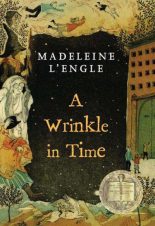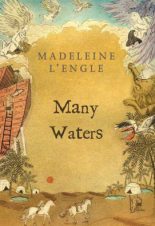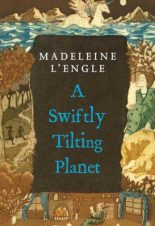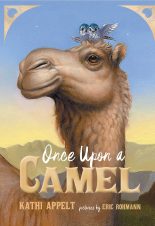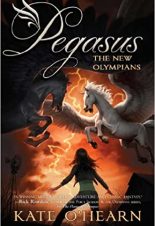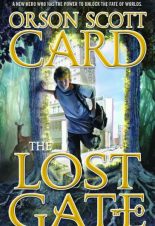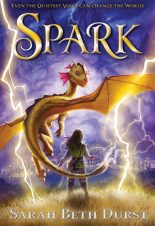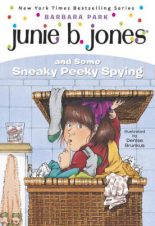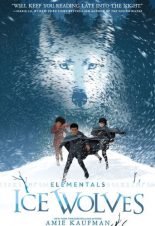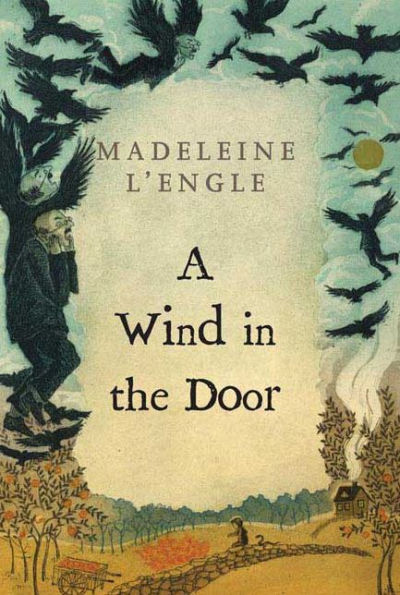
Buy This Book Buy This Series
“You see, Meg! They were here! My dragons were here!” Charles Wallace. –A Wind in the Door
A Wind in the Door
by Madeleine L’Engle
AR Test, Diverse Characters
11+
Score
5.9
256
When six-year-old Charles Wallace tells his sister he’s found dragons in the pasture, Meg doesn’t want to believe him. But lo and behold, Meg and her friend Calvin discover the enormous creature with hundreds of wings and thousands of eyes. A giant man claiming to be their Teacher tells them the dragons—which are really one creature, a cherubim—is one of their classmates. They’ve been brought together because evil creatures called Echthroi are trying to destroy creation—from the largest stars down to the tiny mitochondria in Charles Wallace’s cells. With her brother’s life on the line, Meg must learn how to love even her enemies or the Echthroi will succeed in destroying her brother and perhaps all of creation.
What follows is a fantastical conflict between the forces of good and evil; a struggle of life and love against hatred and destruction. Meg, Calvin, and the cherubim must work together to save Charles Wallace’s mitochondria from the Echthroi that would destroy. They are transported into Charles Wallace’s cells and meet the farandolae that lives inside his mitochondria. The farandolae have been led astray by the Echthroi and are refusing to grow up, killing the mitochondria. Meg and her classmates have to show the farandolae a better way and rescue them from the Echthroi, before the misguided farandolae kill the mitochondria, Charles Wallace and themselves.
Once again Meg complains and resists the tasks that are given her, but she rises in the end and learns how to look for the good in people even if she doesn’t like them. A Wind in the Door is more complex than A Wrinkle in Time and may be confusing for younger readers as it deals with mitochondria and the relativity of space and size. Still, for readers able to grasps its more complex topics, A Wind in the Door is a fun read that imparts the importance of loving your enemies and looking for the good in everyone. While A Wind in the Door doesn’t discuss religion directly, its storyline and themes are allegorical. For instance, the cherubim and Teacher explain that there is a battle between life and darkness, and to save Charles Wallace the children must protect the ‘song of creation’ from evil forces that would disrupt it.
A Wind in the Door is not a science book, but it does combine quantum physicals and biology to show that people are galaxies unto themselves. In order to accomplish this, the main character is reduced to the molecular level, which is made believable through L’Engle’s use of imagery. Besides being an interesting story, the reader learns about the importance of compassion, friendship, and love. Anyone who is interested in learning more about the nature of human relationships should read A Wind in the Door.
Sexual Content
- None
Violence
- The farandolae don’t want to grow up so they suck the nutrients from adult farandolae, called fara, killing them in the process. “A group of farandolae whirled about a fara; fronds drooped; color drained. The dance was a scream of laughter, ugly laughter.”
Drugs and Alcohol
- None
Language
- None
Supernatural
- Meg has a run in with an Echthroi impersonating Mr. Jenkins. Mr. Jenkins, “rose up into the night like a great, flapping bird, flew, screaming across the sky, became a rent, an emptiness, a slash of nothingness.”
- Meg meets a cherubim. “Wings, it seemed like hundreds of wings, spreading, folding, stretching—and eyes how many eyes can a drive of dragons have? and small jets of flame.”
- Meg’s teacher is a “huge” man whose “long robe seemed chiseled out of granite.”
- A large black garden snake acts strangely human, bowing to Meg’s new teacher. While the snake never speaks, it’s said that she too is a “Teacher.”
- Meg is shown how the Echthroi destroy matter; how they turn it into nothingness. “Across the sky, where the stars were clustered as thickly as in the Milky Way, a crack shivered, slivered, became a line of nothing-ness.”
- Meg learns how to kythe, a form of mind-to-mind communication. “It’s how cherubim talk. It’s talking without words, just the same way that I can be myself and not be enfleshed.”
- Farandolae, things that live inside mitochondria, are depicted as “a small, silver-blue mouse…[that] spoke, but with neither a mouse’s squeak nor a human voice. The sound was like harp strings being plucked under water.” Meg and her friends are transported inside a mitochondria, to help the farandolae.
Spiritual Content
- What Charles Wallace thought were dragons turns out to be a cherubim.
- The cherubim tries to explain exactly what the Echthroi are. “I think your mythology would call them fallen angels. War and hate are their business, and one of their chief weapons is un-Naming—making people not know who they are. If someone knows who he is, really knows, then he doesn’t need to hate.”
- When Meg tries to stop the Echthroi, she sings the song of creation, “Sing for the glory of the living and the loving the flaming of creation sing with us dance with us be with us Be! They were not her words only. They were the words of Senex, of the Deepening Sporos…the cherubim and seraphim, wind and fire, the words of the Glory.”
by Morgan Lynn
“You see, Meg! They were here! My dragons were here!” Charles Wallace. –A Wind in the Door
Latest Reviews

Grace Hopper: Queen of Computer Code

Girls Who Code: Learn to Code and Change the World

Alone

Friends Fur-Ever

Harry Houdini: A Magical Life

The Greedy Gremlin

Hoop Genius: How a Desperate Teacher and a Rowdy Gym Class Invented Basketball

Our Violent Ends

Healer of the Water Monster

